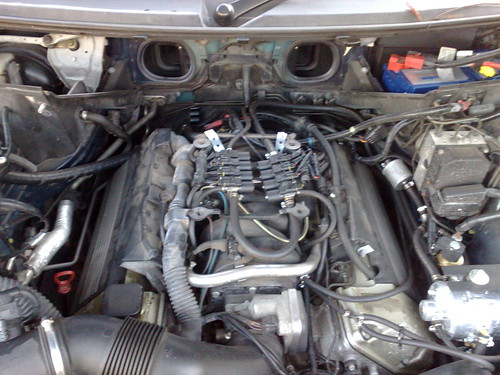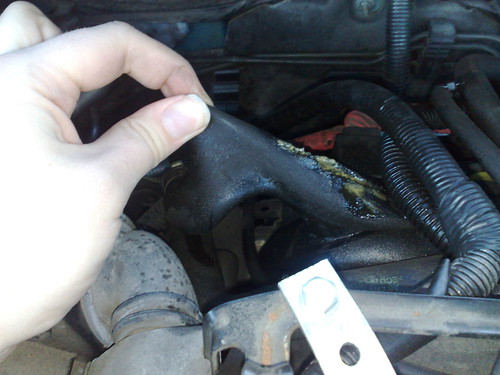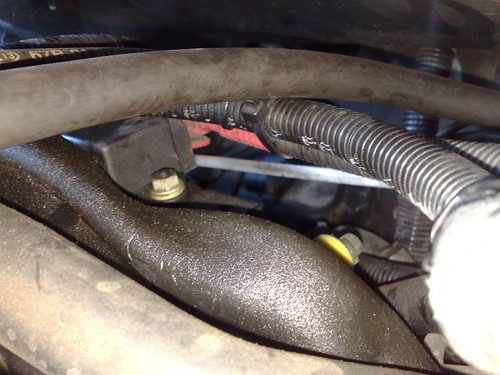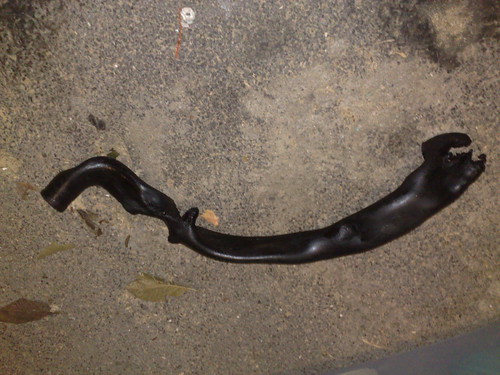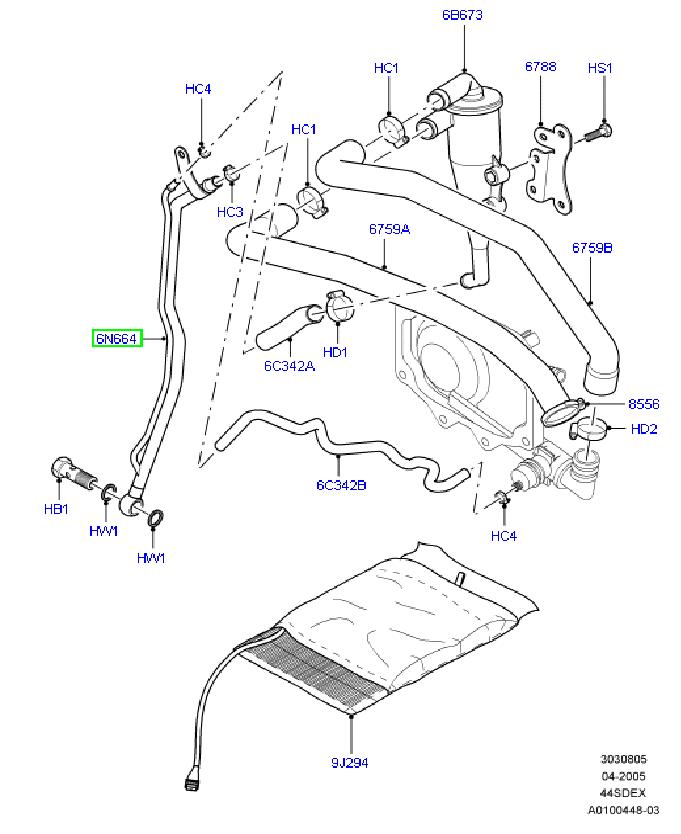 | Home > Maintenance & Mods (L322) > [Mechanical] PCV Hose Replacement |
 
|
|
|
| dan_uk_1984 Member Since: 12 Nov 2008 Location: Bude, Cornwall Posts: 4014  
|
I donít think this has been covered before, so I thought I would share my experience.
|
||
|
| Larry Member Since: 03 Dec 2008 Location: East Midlands Posts: 262  
|
Excellent Dan, this is what these type of forums should have more of. Makes the price of ownership for the more mechanically adventurous a lot cheaper.
|
||
|
| dan_uk_1984 Member Since: 12 Nov 2008 Location: Bude, Cornwall Posts: 4014  
|
Unless you want to edit settings, or read advanced codes for the EAS/SRS/HEVAC then I found a USB - OBD code reader is great. It reads the engine/trans codes and then looks it up in it's database and tells you what the problem is (allbeit usually the wrong description the code is always right) Someone I know paid £300 to have this done, which for a couple of bits of hose and half an hour of labour in a garage environment is rediculous! Like I said, it's definately worth checking yours out, if the vapours dont vent correctly you can get a build up of corrosive gasses in the crank case, or as mine did, it can draw moisture in and turn your oil gloopy! 
|
||
|
| rory_mcw Member Since: 08 Apr 2009 Location: Angus - Scotland Posts: 113 |
ive been meaning to have a look at mine for a while............ this is a great reminder, cheers!!! |
||
|
| StevieH Member Since: 05 Feb 2009 Location: Cumbernauld, Lanarkshire Posts: 117  
|
Good shout mate, just checked mine and the LPG pipe running across the top had totally squashed it flat. Can't believe they put this sorry excuse of a pipe in looks to be made of sausage skin. Can only see the one end of the pipe at the moment not looked far enough down back of engine to see where other end goes, will investigate further. |
||
|
| StevieH Member Since: 05 Feb 2009 Location: Cumbernauld, Lanarkshire Posts: 117  
|
Dan, any chance you could give me an idiots guide as to what parts to buy. I assume I will need a couple of jubilee clips and some pipe. Can you advise of pipe diameter to ask for...thanks Stevie
|
||
|
| dan_uk_1984 Member Since: 12 Nov 2008 Location: Bude, Cornwall Posts: 4014  
|
You will more than likely throw a code - but this will clear itself after you have replaced the hoses, you will probably also get poor idle when on petrol, LPG should be ok though as the LPG ECU ignores most sensors.
|
||||
|
| StevieH Member Since: 05 Feb 2009 Location: Cumbernauld, Lanarkshire Posts: 117  
|
Thanks Dan, I'm 6'6" and can barely feel the other end of the hose down the back, may need to get a crate myself. Will wait until daylight and see how much of the clutter around the top i can remove to make room.
|
||
|
| StevieH Member Since: 05 Feb 2009 Location: Cumbernauld, Lanarkshire Posts: 117  
|
Don't want to veer too far off topic but Dan had me panicked when I saw the pipe had perished and I reluctantly took my oil filler cap off, with one eye open praying there was no white sludge...huge sigh of relief just nice golden brown oil but I noticed small gold shavings of metal on the rubber seal on the cap. Initial inspection it looked like the alloy around the filler cap had corroded. Gingerly scraped it away trying not to let any fall into the timing chains...anyone else noticed this? |
||
|
| StevieH Member Since: 05 Feb 2009 Location: Cumbernauld, Lanarkshire Posts: 117  
|
After 6 hours going round various motor factors found that 21mm internal diameter radiator hose is like hens teeth. Eventually went to a hydraulics company who gave me 22mm internal diameter hose, stuff is about 4mm thick and you could use it as a cosh. Removed old hose which was disintegrating in my hand.
|
||
|
| dan_uk_1984 Member Since: 12 Nov 2008 Location: Bude, Cornwall Posts: 4014  
|
Yeah the Cyclone is a larger diameter, by a couple of mm, but rad hose warmed up will usually stretch (hydraulic hose may not as it has to deal with higher pressures?)
|
||
|
| StevieH Member Since: 05 Feb 2009 Location: Cumbernauld, Lanarkshire Posts: 117  
|
Only did the top hose as it was in a sorry state, bonus being that the new hose is so robust it lifted the electrical connections off the lower hose and let me manipulate it back into shape to leave it unobstructed. I will replace the other hose when i figure out a way of joining two hoses of different diameter without the aid of B&Q (unfortunately they only do 15 and 22mm connectors).
|
||
|
| Dixy Member Since: 09 Apr 2009 Location: Somerset Posts: 1110 
|
If you decide to go sillicone these guys are helpfull http://www.merlinmotorsport.co.uk/
|
||
|
| dan_uk_1984 Member Since: 12 Nov 2008 Location: Bude, Cornwall Posts: 4014  
|
RE CYCLONE:
|
||||
|
| dan_uk_1984 Member Since: 12 Nov 2008 Location: Bude, Cornwall Posts: 4014  
|
I found this info to supliment my post as the Workshop Manual is fairly vague on how the PCV system works:
|
||
|
 
|
|
| All times are GMT + 1 Hour |
< Previous Topic | Next Topic > |
Posting Rules
|
Site Copyright © 2006-2025 Futuranet Ltd & Martin Lewis
![]()

